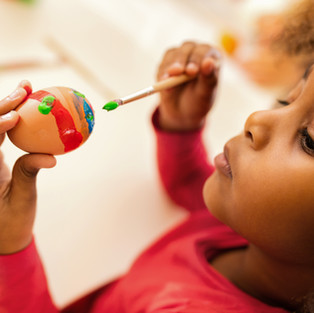Jacqueline Yepez Suárez | Cancun, Mexico
Any child deserves a free and worthy childhood, without responsibilities or problems that do not correspond to him, and that also affect its wellness. They are free for own definition and all of them deserve a golden infancy.
Malnutrition and child labor are two of the main problems that impede development of society since many decades ago and although the abundant efforts that have been done to fight this situation the numbers of children in this reality are still red.
The International Labour Organization (ILO) defines child labor as work that is mentally, physically, socially or morally dangerous and harmful to children; and interferes with their schooling by: depriving them of the opportunity to attend school.
According to data from Compassion International ´s website and a report from ILO, this are some of the most impacting and heartbreaking facts about Child Labor around the globe:
There are between 152 and 168 million children worldwide trapped in child labor, accounting for almost 11 percent of the overall child population.
Forced labour is thought to generate around $150 billion a year in illegal profits.
Children in hazardous work that directly harms their health, safety or moral development make up more than half of all child laborers, numbering between 73 and 85 million children.
Around 47.5 million adolescents aged 15 to 17 years are in hazardous work, accounting for 40 percent of their homologues. Nevertheless, up to a fourth of all hazardous child labour (19 million) is done by children less than 12 years old.
Girls who leave school early do so disproportionately to undertake responsibility for chores within their own homes, while boys are more likely to leave school prematurely in order to join the labor force.
Child labour is mainly caused by poverty and this explains why most of children involved in child labour live in developing countries with the highest percentage of them located in Africa.
According to Global Estimates of child labour by ILO, the prevalence of child labour by region is:

As we can see the gap between Africa and other regions is huge. The percentage increases as the number of developing countries increases by region showing the levels of poverty that each one has. Child Labour prejudice in many forms, for example when children and teenagers who started working at a young age, have less opportunities to find a good job when they grow up because they usually left their studies when they were at elementary school. Many of them are victims of abuses and exploitation and something very disturbing malnutrition, according to a UN report about the increase of hunger around the world, at a global level, Africa and Asia had 39 and 55 percent of children with stunting in 2012.
Actually the prevalence of wasting is extremely high in Asia, where 1 in 10 children are underweight compared to 1 in 100 in Latin America and the Caribbean.
WHAT CAN WE DO?
I think that the best we can do is to create consciousness, I´m sure that before reading this you didn't imagine how many children are living this difficult reality, personally I got very impacted by the numbers and that made me think that we must seize and glad the opportunities and benefits that we have, and use part of them to help people like this children's families; there are many foundations fighting against the problems this situation causes, for example The Kailash Satyarthi Children’s Foundation that is a global thought leader for prevention of exploitation and violence against children. Their work is based on their motto “Do your bit” and visiting their website you can find many ways to do yours. Another foundation that has been working a lot to this cause is Compassion International which applies a sponsorship program to help families of children living in poverty. And there are many more groups dedicated to this cause, but they need of our help, it doesn't matter how little or how big it is, if we all do a little we can get great results.
SOURCES
KSCF. (2018, January 15). Retrieved December 6, 2018, from https://satyarthi.org.in/
Jay Shetty, J. A. Y. (2018, November 27). These Children Never Get To Play | by Jay Shetty
[Video Archive]. Retrieved December 6, 2018, from https://www.youtube.com/watch
v=vjLSZ11mGsA
Quick Facts About Child Labor. (w.d.). Retrieved December 8, 2018, from
Hunger in the world continues to rise, warns a new UN report. (2018, September 11).
Retrieved December 8, 2018, from https://www.unicef.org/en/comunicados-prensa/el-
Child Labor (w.d.). Retrieved December 10, 2018, from
.png)












コメント